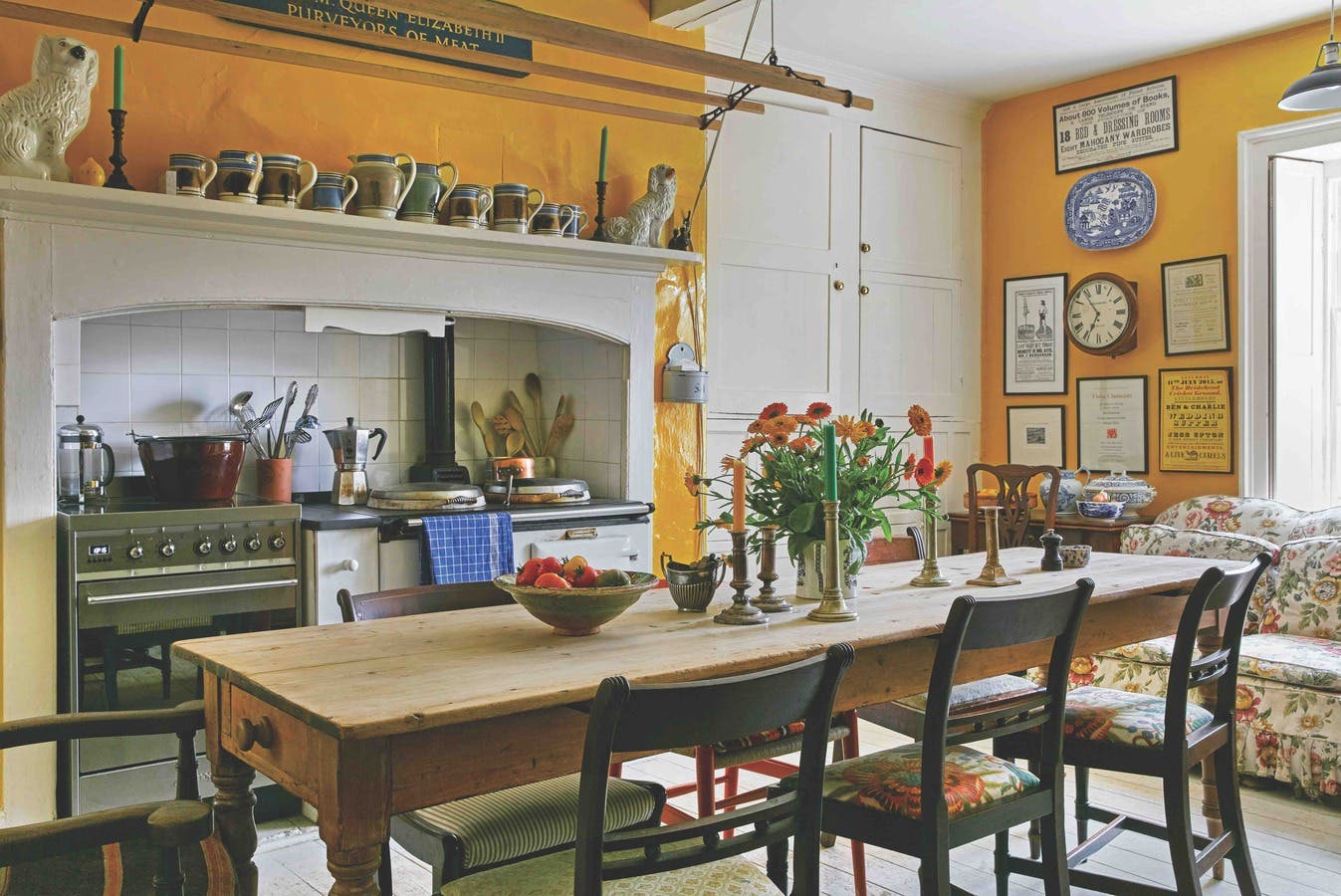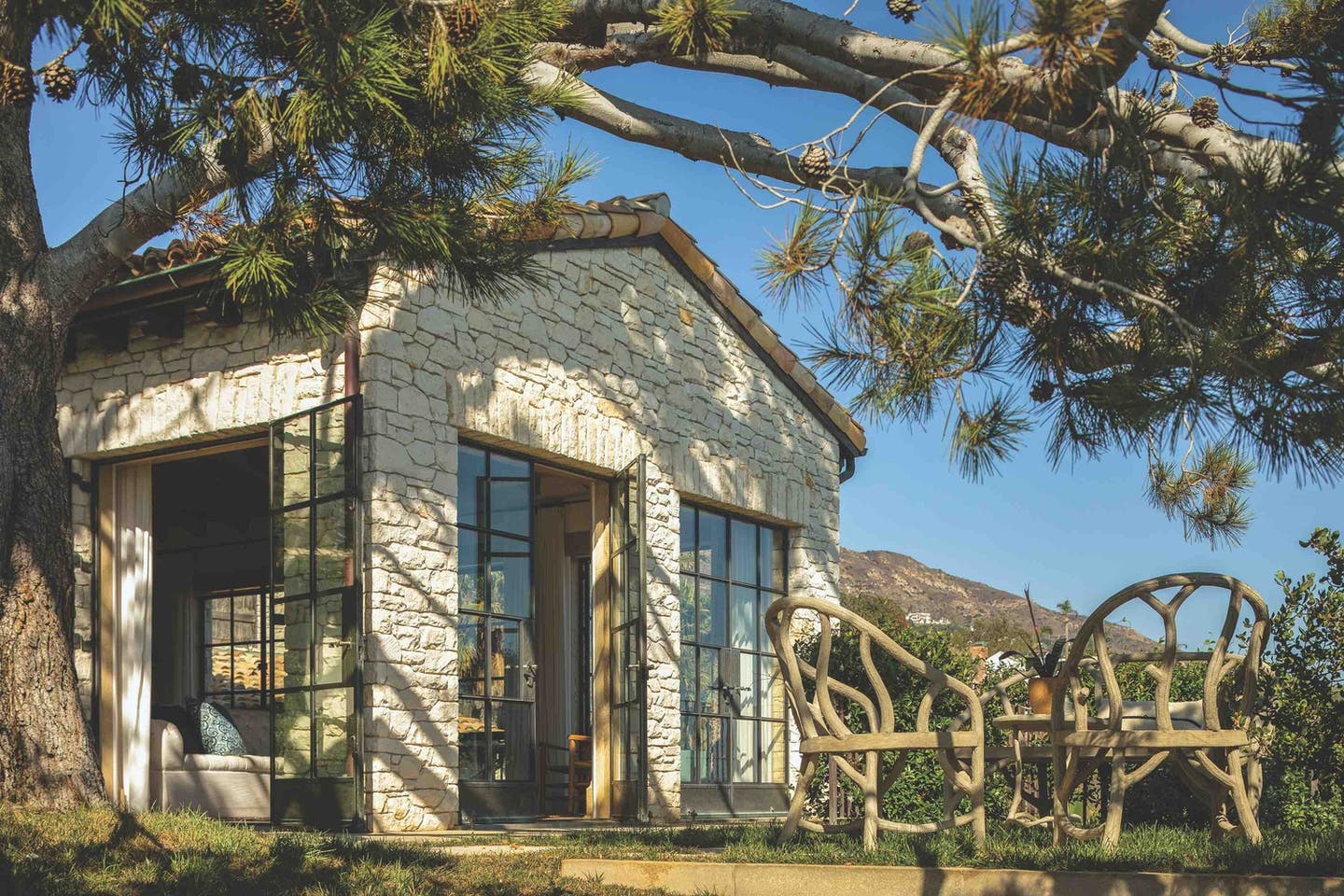
Projects
An Urban Villa by Ken Tate Architect
Project: Urban Palladian-style Villa
Design Architect: Ken Tate Architect, New Orleans, LA
Photography by Fred Licht and Timothy Dunford
Under the expansive branches of an immense, age-old Live Oak on New Orleans’ historical and charming St. Charles Avenue, a Palladian-style villa shades itself.
Traditional and timeless, the residence, designed by architect Ken Tate of New Orleans, is a superb complement to its history-rich neighbors in Uptown, which was settled during the late 19th and early 20th Centuries, when the Colonial Revival was in vogue.
“My task was to design a house that looked like it was a part of that era, but it couldn’t be a mere replica of a classical style; it had to be different because the homes in Uptown are some of the most creative architecture in the city,” Tate says. “I had to think like that, too. I had to get into the mindset of the long-ago architects of the other houses.”
After touring the neighborhood with his clients, a newly married philanthropic couple, Tate suggested that an estate referencing the Portico of Palladio’s Basilica in Vicenza and the Mediterranean Revival style would be the ideal place not only to raise a family as well as funds for favorite charities but also to house their vast collection of contemporary art.
As a self-styled “intuitive classicist,” Tate felt these styles would give him the architectural freedom he needed. “The clients originally wanted a French style,” he says. “But French is sacred in New Orleans because the city has a lot of French architecture and influence; anything I did that was not a literal interpretation would cause comment. Besides which, 1920s Italian Renaissance is a good vehicle for creative design, which makes it a good fit for the neighborhood.”
He chose to clad the structure in stucco over masonry with limestone architectural details because “it’s more human and friendly than a completely limestone house—it’s a house, I didn’t want it to look like a public library.”
While Tate was “dreaming the house,” he looked not only to Palladio’s Basilica but also to his work in the Veneto. Francis Burrall Hoffman’s Vizcaya in Miami came to mind as did Addison Mizner’s and Maurice Fatio’s mansions in Palm Beach and Wallace Neff’s and George Washington Smith’s Mediterranean Revival villas in California.
The project, which would take five years to complete and generated some 380 design documents, almost didn’t get off the ground.
For some four decades, there had been a moratorium on new building on St. Charles Avenue in Uptown, and before Tate’s project could proceed, approvals from numerous preservation groups and neighborhood associations had to be secured so the original dwelling, a homely 1930s bungalow that had been converted to an apartment house, could be demolished.
“The house is on a corner,” Tate says, “so I had to get approvals from the reservation groups that set the rules for each street. It was not an easy process, and it meant that I had to present a complete schematic design before we could do any working drawings. I hired an architect who lived on the side street, and who was familiar with the process, to facilitate. It still took six months.”
Formal Facade with Mediterranean Revival Mix
In keeping with the Uptown style, Tate’s two-story, 12,800-square-foot urban villa, which has two single-story wings, presents a formal front façade on the St. Charles side and a more relaxed Mediterranean Revival architectural face on the side street. The landscaping, too, follows this public-private format from front to back.
The front portico, a prominent and remarked-upon feature of the home, rises a single story (and without pediment) in defiance of Palladio’s villas. “This was both an intuitive and rational decision,” Tate says. “By making it lower than the rest of the front façade, you get an unobstructed view of it when you drive by. The second story is obscured somewhat by the Live Oak’s massive crown.”The second-story terrace, he adds, offers the perfect vantage point for watching the parades that pass by.
On the side street, Tate allowed himself to get a bit more exuberant: He added a romantic three-story tower, which was inspired by those in the Mediterranean homes of Palm Beach, Coral Gables, Bel Air and Santa Barbara. Clad inside with colorful, textured tiles, it is an exotic oasis, or as Tate calls it, “a nest.”
“The clients weren’t keen on the idea in the beginning, but now they love it,” he says. Like Palladio’s villas, Tate’s urban villa is built along a central main axis, but in Tate’s more flexible design, it had to be shifted to create a second one for the back of the house so he could center the classical swimming pool and its loggia. He chose to do this in the rear gallery, which provides lateral circulation to the side areas of the house as well as the rear wings.
“The tower, which can be seen from the rear courtyard, helped facilitate the shift without announcing it,” he says. “There’s a bit of high-design gamesmanship going on at the rear façade/tower/central pediment/wings that makes this shift meaningful. I basically exploited this necessary ‘problem’ into a high-art composition.”
The home’s interior walls were styled as a neutral palette for colorful, contemporary artworks, allowing the ceilings to rise to the occasion with groin and barrel vaults, antique wood beams and plaster coves.
One of the more elaborate ceiling treatments is in the living room, where reclaimed oak beams are supported by classically carved brackets. In the kitchen, heart-pine beams, cracked by time, become a counterpoint to the contemporary white cabinetry, and in the master bath, which is modeled after a Roman bath, a coved ceiling, painted white, tames the zebra stripes of the marble.
When asked about favorite rooms, Tate talks instead of favorite “moments.” “I like experiential things,” he says. “For me, the loggia is a big moment because it’s the heart of the house. So is the back courtyard because even though you’re in the middle of a dense city, it’s sited and landscaped so that you don’t see any other houses.”
For Tate, designing the urban villa on St. Charles Avenue, which is known as The Jewel of America’s Grand Avenues, was the opportunity of a lifetime.
“I’ve been working all over the South my entire career, but this is my first project in New Orleans because there’s no land left to build on,” he says. “I doubt that the neighborhood will allow another new house to be built for quite a while.”
Key Suppliers
Architect: Ken Tate, New Orleans, LA
General Contractor: Leonard Isacks, Isacks Construction, Metairie, LA
Interior Designer: Gerrie Bremermann, Bremermann Designs, New Orleans, LA (now retired)
Landscape Architect: Gavin Duke, Page/Duke Landscape Architects, Nashville, TN
Master Wood Carver: Frederick C. Wilbur, Lovingston, VA (now retired)
Cut Limestone Supplier: Rob Teel, Continental Stones Co., Florence, TX
Master Mason: David Williams, Williams Masonry, Fate, TX
Master Stone Carver: Bob Ragan, Texas Carved Stone, Florence, TX
Decorative Metal: Work Rob Greenglass, The Design-Build Group, Toronto, Canada
Hardware Supplier: P.E. Guerin, New York City, NY
Steel Window and Door Supplier: Crittall Windows, Essex, England
Salvage Clay Tile Roofing: Dow Straubmueller, The Roofing Tile & Slate Co., Dallas, TX
French Limestone Paving: Exquisite Surfaces, New York City, NY
Cut-Stone Mantel: Barry Perry, Southold, NY (now retired)
Custom Garage Doors: Scott Hahn, Hahn’s Woodworking Co., Branchburg, NJ
Stucco and Plaster Work: Jeff Poree Plastering, New Orleans, LA
Custom Millwork: Jason Hartdegen, Gus Hartdegen and Sons, Kenner, LA
Tile & Marble: Peggy Stafford, Stafford Tile & Stone, New Orleans, LA








